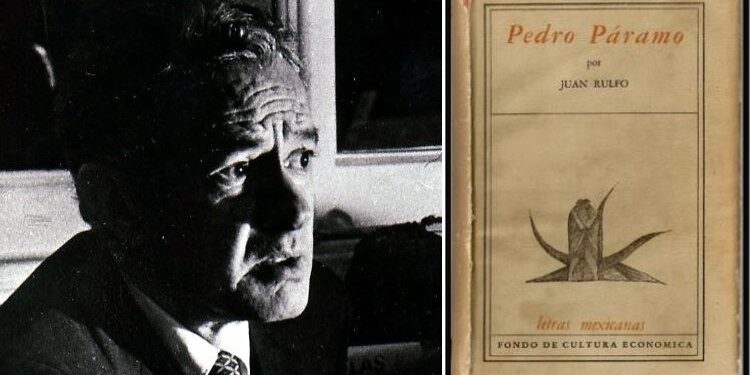Eduardo González
The Caja de las Letras of the Instituto Cervantes has received in deposit the legacy of the Economic Culture Fund (FCE), including the first edition of the novel 'Pedro Páramo', written by the Mexican Juan Rulfo and published in 1955.
The legacy, delivered this past Wednesday, includes 'El llano en llamas' (1981), also by Rulfo; 'You will go and you will not return' (1973), by José Emilio Pacheco; 'Diary of a Resurrection' (1979), by Luis Rosales; ‘Gringo Viejo (1985)’, by Carlos Fuentes; 'Dreams of constancy' (1988), by Ida Vitale, and the 'Historical catalog 1934-2009 of the Economic Culture Fund (2009)', as reported by the Institute in a press release.
The presentation ceremony took place this past Wednesday at the Cervantes headquarters in Madrid, at the hands of the general director of the Economic Culture Fund, Paco Ignacio Taibo II, and in the presence of the director of Cervantes, Luis García Montero; the ambassador of Mexico in Spain, Quirino Ordaz Coppel; the Secretary of State for Culture, Jordi Martí Grau; the general secretary of the Institute, Carmen Noguero; and the head of the Economic Culture Fund in Spain, Manuel Lazcano.
During the event, García Montero pointed out that the Fund “is a fundamental reference for the Instituto Cervantes”, first of all, “because it is Mexico, a country in which culture, literature and Spanish achieve a very special role for the entire community”, and secondly, “because it is worth highlighting that Mexico is the country with the largest number of people who have Spanish as their mother tongue in the world.”
“Mexico is a representative of the entire Hispanic American community that always celebrates the unity of a shared language and knows itself to be fortunate to have this language, but also to know how to respect diversity,” added the director of the Institute. Another reason to celebrate this legacy according to García Montero is “the possibility of celebrating a tribute to the world of books and publishing work, and the FCE is an essential reference.”
The first criticisms of Pedro Páramo were bad
After the legacy, a discussion took place between García Montero and Taibo II in which they reflected on the meaning and contribution of the FCE to all of Ibero-America since its founding in Mexico in 1934 and its more than 60 years of presence in Spain.
Taibo II commented that, when thinking about what to bequeath to the Instituto Cervantes, they found by chance the first reviews of Pedro Páramo, which only had a circulation of 2,000 copies in its first edition: “The first review and the second were totally negative, hurtful, invasive and disqualifying. Until the third we did not find a compliment.”
The FCE was born as a publishing house dedicated to thought and economics, but its work soon spread to other social sciences and literature. “It is very difficult to think about Mexican culture and a very good part of culture in Spanish without recognizing the work of the Fund,” explained the director of the Cervantes, who also recalled the deep relations of the FCE with the Spanish republican exile: “It tended bridges between Mexican and Spanish culture and helped build a friendship between two countries that have always refused to be forgotten.”
This important Spanish-language publishing group based in Mexico, which is now 90 years old, is present throughout Latin America and has eight subsidiaries in Argentina, Chile, Colombia, Ecuador, Spain, the United States, Guatemala and Peru. Since its founding, FCE has published more than 10,000 works, of which nearly 5,000 remain in circulation, and has a digital catalog of more than 2,000 titles.
...







